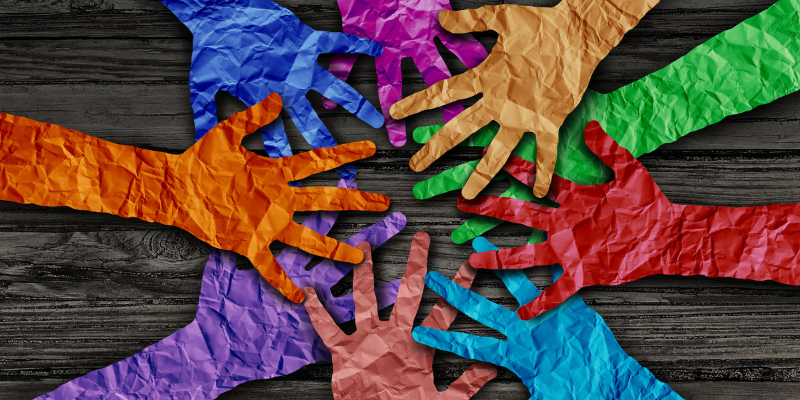I will always remember my first time arriving as a “regular” migrant to a different town from the one where I was born. It was at the same time an encounter and a cultural shock, where my mentality, words, gestures, beliefs and practices provoked a sense of dilemma with regard to the cultural practice of the people who welcomed me.
That first cross-cultural encounter helped me to understand, in later encounters with other people, the richness that their culture imparted to me personally. Much of the best that is in me was forged in the cultural and social exchanges in each town where I was able to lived for a time: the landscapes, biodiversity, customs, food, drinks, parties, beliefs and political practices, all contributed in a dynamic way to my growth as a citizen of our common home. In these countries, my status has always been a “regular” migrant, and my status led to respectful relationships with government agents. How would the experience have been, if my immigration status had been irregular?
With this question I return in the subject of this article, a celebration much related to migration: “World Day for Cultural Diversity for Dialogue and Development.” It has been stated that cultural diversity
“manifests itself in the originality and plurality of identities that characterize the groups and societies that make up humanity. Source of exchanges, innovation and creativity, cultural diversity is, for the human race, as necessary as biological diversity for living organisms. In this sense, it constitutes the common heritage of humanity and must be recognized and consolidated for the benefit of present and future generations.”[1]
This statement links cultural diversity to biodiversity, both of which promote a balance that favors life in this common home.
Cultural diversity has been a palpable reality in migration since the beginning of humanity. Consider a recent example from the history of the American continent, in what we now know as countries with a government structure based on a democratic rule of law, the USA and Canada of North America. These nations have been established and strengthened through the encounter of migrant groups with First Nations people, those already inhabiting these territories. The meeting of cultures is always valuable for the growth and social development of any nation. The intrinsic historical irony of this is that, in recent decades, the US government has enacted policies and developed actions that violate the human rights of migrants who arrive in its territory, a territory already occupied by migrants.
We should bear in mind that migration around the world is on the rise. The UN notes that,
“The number of international migrants at the global level currently amounted to 272 million, a record that indicates an increase of 51 million people since 2010. The regional distribution of international migrants is led by Europe, which is home to 82 million people, followed by North America with 59 million. “[2]
ECLAC confirms that this migratory growth in Latin America, despite the irregular status of migrants, generates a positive contribution in the economic sphere. Executive secretary, Alicia Bárcena states that, “in 2015, the contribution of migrants to world GDP was approximately 6.7 trillion dollars equivalent to 9.4% of world GDP. “[3]

All this migratory movement in Latin America has shaken the structures of the governments of destination countries. This dramatic reality has put respect for migrant rights to the test, as well as the ability to integrate them into the social structure. In recent years, countries where the migratory flow has increased are: Chile (Haitians and Venezuelans), Costa Rica (Nicaraguans), Peru and Colombia (Venezuelans). Both in these destination countries and in transit countries, such as the case of Mexico and Guatemala, what is put to the test is the rule of law that protects and cares for the human rights of migrants.
Racist, discriminatory and xenophobic mentality and behavior on the part of people living in receiving communities represents another significant element that destroys cultural diversity. Likewise, we observe this same behavior by agents of state institutions, whose action often violate the human rights of migrant men and women, and even worse, of minors, subjecting them to humiliations that impact their human dignity.
For those of us who feel inspired and encouraged by the charism Francisclarian, you may want to look back to the story of the meeting of Brother Francis of Assisi with the Sultan of Egypt. An encounter with few exact historical data, but with a transcendent meaning in relation to the encounter of two different cultures, religions, societies and territories. What we see in this meeting of cultures and religions is that, through open, sincere and friendly dialogue, without acting with personal and institutional violence, without seeking to erase the other culture, we can accept diversity as a human wealth. This action, surely, was based on tolerance, empathy and mutual understanding, and makes possible the brotherhood and sisterhood of peoples.
René Arturo Flores, OFM
RFM-El Salvador
___________________________
[1] United Nations Educational, Scientific and Cultural Organization http://www.unesco.org/new/es/culture/themes/dialogue/21-may-world-day-for-cultural-diversity/#:~:text=Tras%20la%20adopci%C3%B3n% 20de% 20la, (Resolution% C3% B3n% 2057% 2F249)
[3] Economic Commission for Latin America and the Caribbean (ECLAC) https://www.cepal.org/es/comunicados/cepal-impacto-social-economico-cultural-la-migracion-es-notoriamente-positivo-paises

